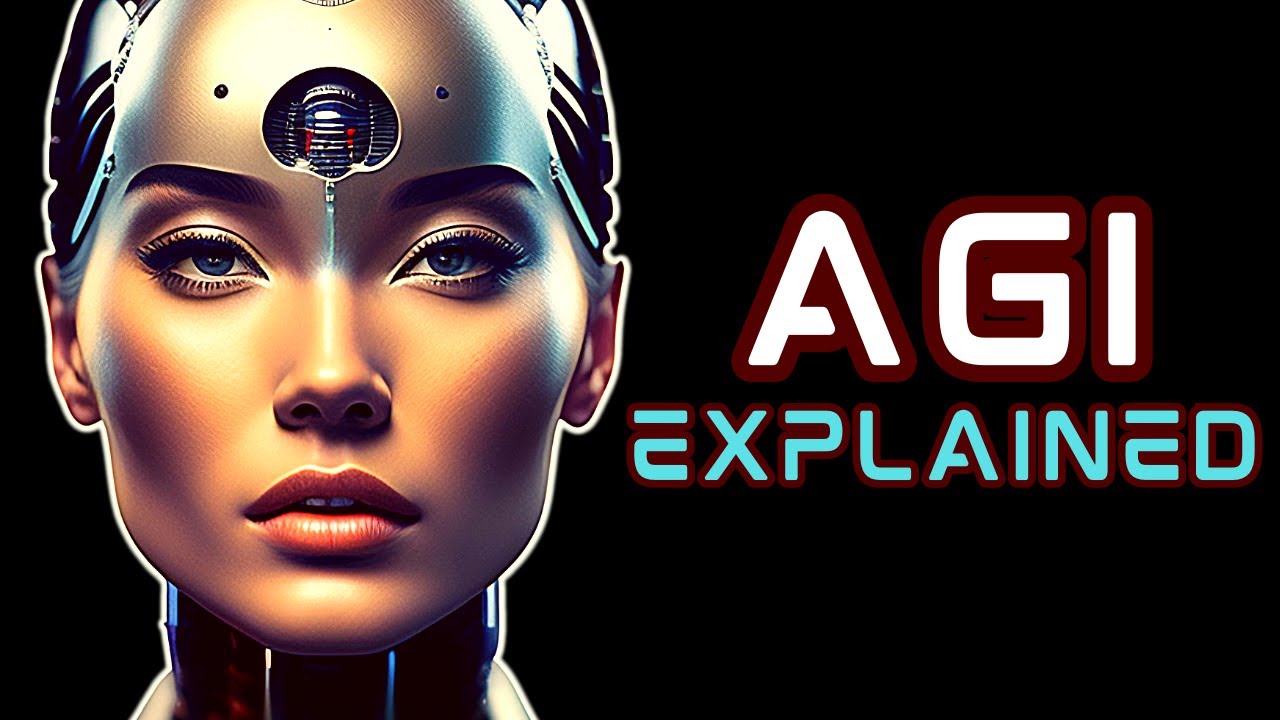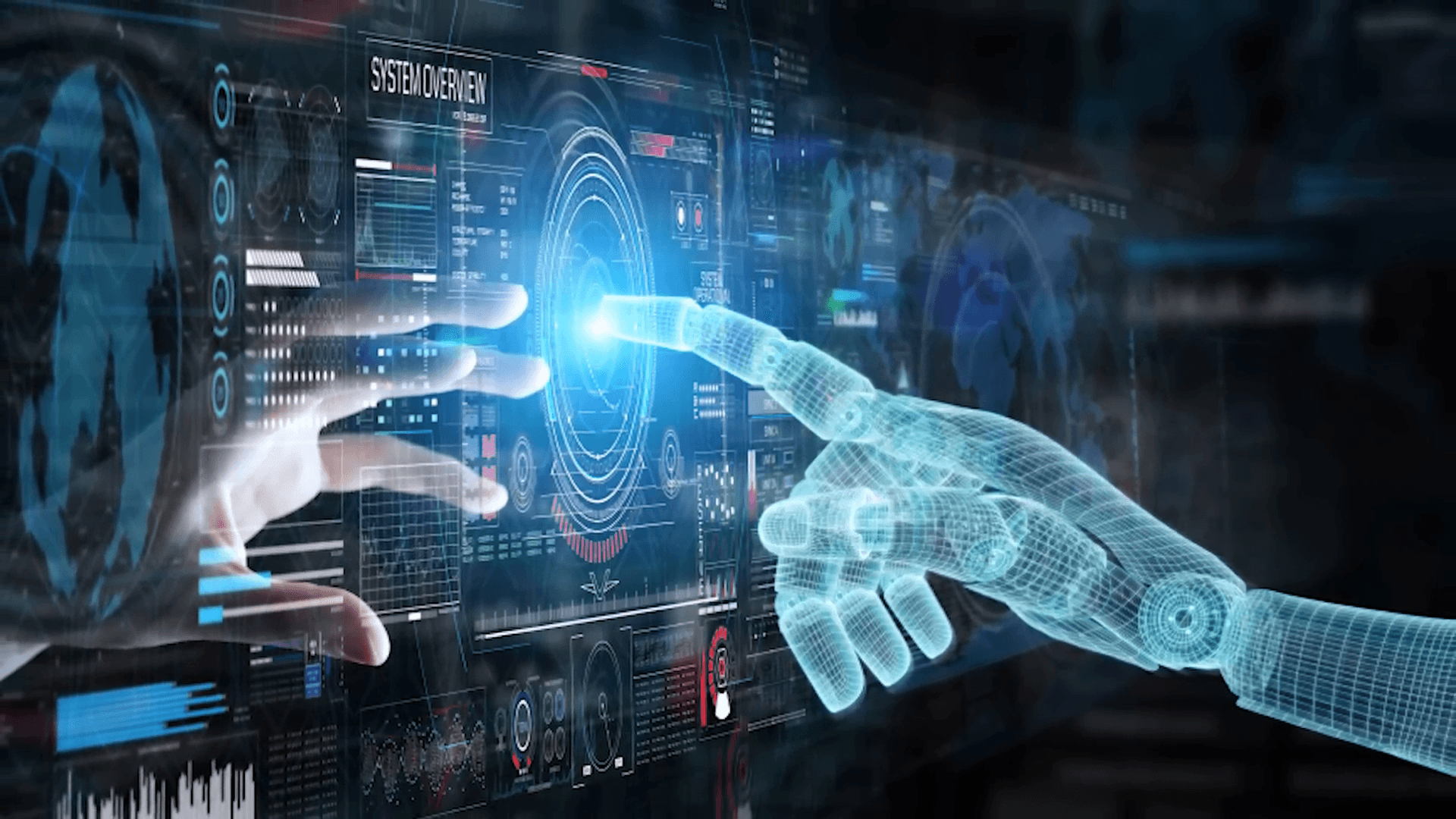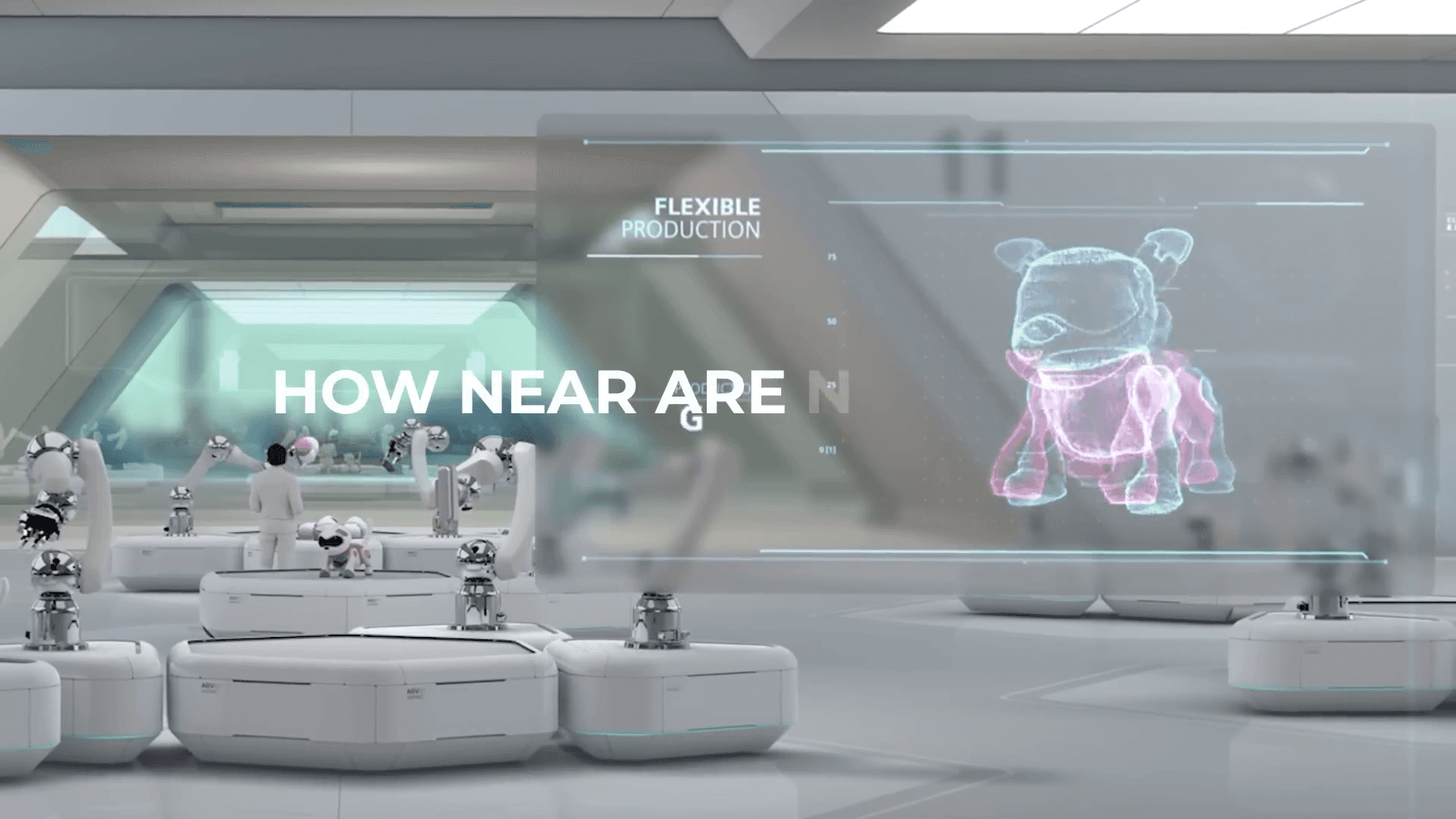Unlocking the Future: Understanding Artificial General Intelligence (AGI)
Unlocking the Future: Understanding Artificial General Intelligence (AGI)
Unlocking the Future: Understanding Artificial General Intelligence (AGI)
Jul 15, 2024

Artificial General Intelligence (AGI) is a concept that fascinates and terrifies many. As technology races forward, understanding AGI's potential, challenges, and implications becomes crucial. This blog will break down AGI in an energetic and accessible way, providing insights into its impact on our world.
Table of Contents
Intro 🌟
Have you ever wondered what it really means when we talk about artificial intelligence becoming as smart as humans, or even outsmarting us? This idea, called artificial general intelligence, can seem complex and daunting.
Breaking Down the Concept of AGI
It's easy to get lost in the jargon, the scientific complexities, and the various debates about the implications of such an advanced AI. You might be wondering if it's even possible to understand AGI without a PhD in computer science. But don't worry.
In this blog, we're going to break down the concept of AGI, its potential, the challenges in developing it, and its implications in a way that is easy to grasp, whether you're a seasoned AI enthusiast or a curious beginner.

What is AGI? 🤖
AGI, or Artificial General Intelligence, is the ultimate goal of AI research. It aims to create software or machines that can perform any intellectual task that a human can.
The Pinnacle of AI
Think of AGI as creating software or a machine that can do anything a human can do, from problem-solving to adapting to new situations. AGI represents the pinnacle of AI, going beyond narrow applications to encompass a wide range of tasks.
The goal of AGI is to develop software that represents generalized human cognitive abilities, enabling the system to tackle unfamiliar tasks and find solutions.
Different Definitions
Experts from various fields define AGI differently. Computer scientists emphasize goal achievement, while psychologists emphasize adaptability and survival.
Goal achievement
Adaptability
Survival
AGI vs. Narrow AI
AGI stands apart from weak or narrow AI, which focuses on specific tasks or problems. While narrow AI is impressive, it lacks the flexibility and general problem-solving abilities of AGI.

Potential Capabilities
Currently, true artificial general intelligence systems only exist in science fiction. If AGI were to be realized, it would possess abstract thinking, common sense, background knowledge, transfer learning, and the ability to understand cause and effect.
Abstract thinking
Common sense
Background knowledge
Transfer learning
Understand cause and effect
Beyond Human Capabilities
In theory, an AGI could perform any task that a human can, and even tasks beyond human capabilities. At the very least, AGI would combine human-like flexible thinking and reasoning with computational advantages, such as near-instant recall and rapid calculations.
These systems would have the same intellectual capabilities as humans, but they would surpass human abilities due to their capacity to access and process vast amounts of data at incredible speeds.
True AGI would possess the level of skills and abilities that no existing computer can achieve. While today's AI can perform many tasks, they fall short of the success level required to be classified as human-level or possessing general intelligence.
Finance and Business 💼
AGI holds the potential to revolutionize finance and business sectors.
Automating Financial Processes
AGI could automate financial analysis, trading, and risk management processes. It can analyze vast amounts of data to make informed market predictions.
Financial analysis
Trading
Risk management

Improved Decision Making
This automation could lead to more efficient and accurate decision making in the financial industry. The ability to process and analyze large data sets quickly will help businesses stay ahead of market trends.
Challenges 🚧
Achieving AGI comes with significant obstacles that need to be addressed.
Hardware Limitations
The computational power required for current AI models is immense. Specialized hardware like GPUs and TPUs have been developed to speed up AI training, but it still takes weeks or even months to train a model.
High computational power
Specialized hardware
Long training times
Lack of Data Diversity
Many AI research datasets are predominantly Western-centric, limiting the understanding of AI systems. For AGI to achieve human-like intelligence, it needs access to a broader range of culturally diverse information.
Possible Solutions
One solution is using generative adversarial networks (GANs) to generate synthetic yet realistic data. By leveraging GANs, we can augment training data with culturally diverse examples, enriching the AI's knowledge base.
Learning 📚
Learning is at the core of Artificial General Intelligence (AGI). To achieve AGI, we need significant advancements in machine learning algorithms and techniques.
Machine Learning Algorithms
Current AI models like GPT-3 and GPT-4 are impressive but task-specific. We need algorithms capable of learning multiple tasks simultaneously and understanding broader contexts.
Task-specific models
Multi-task learning
Broader context understanding
Neural Network Architectures
Recent progress in AI is driven by neural networks like recurrent networks, convolutional networks, and transformer networks. Continued research and innovation in these areas are essential.
Recurrent networks
Convolutional networks
Transformer networks
Transfer Learning
Transfer learning allows AI to apply knowledge from one context to another, mimicking human ability to apply knowledge across different domains.
Knowledge transfer
Cross-domain application
Common Sense Reasoning
AI currently struggles with tasks requiring common sense reasoning. Building models that can understand and utilize intuitive, everyday knowledge is a significant challenge.
Common sense
Everyday knowledge
Reinforcement Learning
Reinforcement learning is where an AI learns to make decisions by taking actions to achieve a goal. It allows AI to learn from mistakes and improve performance iteratively.
Decision making
Learning from mistakes
Unsupervised Learning
Most current AI success is built on supervised learning, requiring large labeled datasets. Humans learn much of their knowledge unsupervised. Advancements in unsupervised learning algorithms are crucial for AGI.
Supervised learning
Unsupervised learning
Computational Resources
Training cutting-edge AI models requires vast computational resources. This demand will grow as we move towards AGI.
High computational demand
Vast resources
Data Efficiency
AGI needs to learn from fewer examples, akin to human learning. Developing algorithms that can learn efficiently from less data is crucial.
Efficient learning
Fewer examples
Explainability 🧐
Explainability is crucial as AI systems become more complex. Understanding why AI makes certain decisions is becoming harder.
Importance of Explainability
As AI systems grow more sophisticated, the need for transparency and understanding in their decision-making processes becomes paramount. This is especially true for AGI.
Transparency
Understanding decisions

Challenges in Explainability
Current AI models often operate as "black boxes," making it difficult to interpret their decisions. To trust and effectively use AGI, we need to develop methods for better explainability.
Black box models
Interpretation challenges
Techniques for Explainability
Researchers are exploring various techniques to make AI models more interpretable. These include visualizations, simplified models, and post-hoc explanations.
Visualizations
Simplified models
Post-hoc explanations
Benefits of Explainability
Enhanced explainability leads to greater trust and adoption of AI systems. It also helps in diagnosing errors and biases, improving overall system performance.
Greater trust
Error diagnosis
Bias identification
How Near Are We ⏳
Everyone's burning question is, "How close are we to AGI?" While it may sound like science fiction, AGI is gradually becoming a reality.
Current Predictions
Developing AGI is complex, making it hard to pinpoint an exact timeline. Experts predict AGI could arrive as early as 2030, according to Forbes. A recent survey among AI specialists projected AGI's emergence by 2060.
2030 (Forbes)
2060 (AI specialists)
Technological Progress
Technological advancements play a crucial role in shaping the pace of AGI development. Rapid breakthroughs could mean AGI arrives sooner, while obstacles could delay it.
Rapid breakthroughs
Obstacles and slowdowns
Investment and Resources
Funding and collaboration among researchers could expedite AGI's development. However, advancing too quickly without ethical considerations could have disastrous consequences.
Increased funding
Collaboration
Ethical considerations

Will AGI Save or Destroy Us? 🛡️
The question of whether AGI will save or destroy humanity sparks much debate and speculation. It's crucial to consider both the potential benefits and risks.
Potential Benefits
AGI could transform our world positively. It can address global challenges like climate change, disease eradication, and resource management. AGI's computational power could lead to scientific breakthroughs and technological innovations.
Climate change
Disease eradication
Resource management
Everyday Impacts
We already see AI's impact in our daily lives with digital assistants like ChatGPT, self-driving cars, and AI-generated art. Automation could change how we work and shop, potentially replacing humans in certain tasks.
Digital assistants
Self-driving cars
AI-generated art

Risks and Concerns
AGI's complexity raises concerns about abstract thinking, self-awareness, and consciousness. The concept of singularity, where AI surpasses human intelligence, often depicts scenarios where AI either destroys humanity or subjugates it.
Abstract thinking
Self-awareness
Singularity
Expert Warnings
Renowned scientists like Stephen Hawking and tech experts like Elon Musk have expressed concerns. They fear AGI could lead to unforeseen consequences, including unimaginable weapons and manipulation of human leaders. Both agree that development should be regulated to ensure responsible use.
Stephen Hawking
Elon Musk
Government regulation
Conclusion 🎉
Understanding AGI is crucial as we move toward a future where technology plays an ever-increasing role in our lives. By grasping its potential and challenges, we can better prepare for the transformations it will bring.

FAQ ❓
What is AGI?
AGI stands for Artificial General Intelligence, aiming to perform any intellectual task a human can.
How is AGI different from narrow AI?
AGI has general problem-solving abilities, unlike narrow AI, which focuses on specific tasks.
Artificial General Intelligence (AGI) is a concept that fascinates and terrifies many. As technology races forward, understanding AGI's potential, challenges, and implications becomes crucial. This blog will break down AGI in an energetic and accessible way, providing insights into its impact on our world.
Table of Contents
Intro 🌟
Have you ever wondered what it really means when we talk about artificial intelligence becoming as smart as humans, or even outsmarting us? This idea, called artificial general intelligence, can seem complex and daunting.
Breaking Down the Concept of AGI
It's easy to get lost in the jargon, the scientific complexities, and the various debates about the implications of such an advanced AI. You might be wondering if it's even possible to understand AGI without a PhD in computer science. But don't worry.
In this blog, we're going to break down the concept of AGI, its potential, the challenges in developing it, and its implications in a way that is easy to grasp, whether you're a seasoned AI enthusiast or a curious beginner.

What is AGI? 🤖
AGI, or Artificial General Intelligence, is the ultimate goal of AI research. It aims to create software or machines that can perform any intellectual task that a human can.
The Pinnacle of AI
Think of AGI as creating software or a machine that can do anything a human can do, from problem-solving to adapting to new situations. AGI represents the pinnacle of AI, going beyond narrow applications to encompass a wide range of tasks.
The goal of AGI is to develop software that represents generalized human cognitive abilities, enabling the system to tackle unfamiliar tasks and find solutions.
Different Definitions
Experts from various fields define AGI differently. Computer scientists emphasize goal achievement, while psychologists emphasize adaptability and survival.
Goal achievement
Adaptability
Survival
AGI vs. Narrow AI
AGI stands apart from weak or narrow AI, which focuses on specific tasks or problems. While narrow AI is impressive, it lacks the flexibility and general problem-solving abilities of AGI.

Potential Capabilities
Currently, true artificial general intelligence systems only exist in science fiction. If AGI were to be realized, it would possess abstract thinking, common sense, background knowledge, transfer learning, and the ability to understand cause and effect.
Abstract thinking
Common sense
Background knowledge
Transfer learning
Understand cause and effect
Beyond Human Capabilities
In theory, an AGI could perform any task that a human can, and even tasks beyond human capabilities. At the very least, AGI would combine human-like flexible thinking and reasoning with computational advantages, such as near-instant recall and rapid calculations.
These systems would have the same intellectual capabilities as humans, but they would surpass human abilities due to their capacity to access and process vast amounts of data at incredible speeds.
True AGI would possess the level of skills and abilities that no existing computer can achieve. While today's AI can perform many tasks, they fall short of the success level required to be classified as human-level or possessing general intelligence.
Finance and Business 💼
AGI holds the potential to revolutionize finance and business sectors.
Automating Financial Processes
AGI could automate financial analysis, trading, and risk management processes. It can analyze vast amounts of data to make informed market predictions.
Financial analysis
Trading
Risk management

Improved Decision Making
This automation could lead to more efficient and accurate decision making in the financial industry. The ability to process and analyze large data sets quickly will help businesses stay ahead of market trends.
Challenges 🚧
Achieving AGI comes with significant obstacles that need to be addressed.
Hardware Limitations
The computational power required for current AI models is immense. Specialized hardware like GPUs and TPUs have been developed to speed up AI training, but it still takes weeks or even months to train a model.
High computational power
Specialized hardware
Long training times
Lack of Data Diversity
Many AI research datasets are predominantly Western-centric, limiting the understanding of AI systems. For AGI to achieve human-like intelligence, it needs access to a broader range of culturally diverse information.
Possible Solutions
One solution is using generative adversarial networks (GANs) to generate synthetic yet realistic data. By leveraging GANs, we can augment training data with culturally diverse examples, enriching the AI's knowledge base.
Learning 📚
Learning is at the core of Artificial General Intelligence (AGI). To achieve AGI, we need significant advancements in machine learning algorithms and techniques.
Machine Learning Algorithms
Current AI models like GPT-3 and GPT-4 are impressive but task-specific. We need algorithms capable of learning multiple tasks simultaneously and understanding broader contexts.
Task-specific models
Multi-task learning
Broader context understanding
Neural Network Architectures
Recent progress in AI is driven by neural networks like recurrent networks, convolutional networks, and transformer networks. Continued research and innovation in these areas are essential.
Recurrent networks
Convolutional networks
Transformer networks
Transfer Learning
Transfer learning allows AI to apply knowledge from one context to another, mimicking human ability to apply knowledge across different domains.
Knowledge transfer
Cross-domain application
Common Sense Reasoning
AI currently struggles with tasks requiring common sense reasoning. Building models that can understand and utilize intuitive, everyday knowledge is a significant challenge.
Common sense
Everyday knowledge
Reinforcement Learning
Reinforcement learning is where an AI learns to make decisions by taking actions to achieve a goal. It allows AI to learn from mistakes and improve performance iteratively.
Decision making
Learning from mistakes
Unsupervised Learning
Most current AI success is built on supervised learning, requiring large labeled datasets. Humans learn much of their knowledge unsupervised. Advancements in unsupervised learning algorithms are crucial for AGI.
Supervised learning
Unsupervised learning
Computational Resources
Training cutting-edge AI models requires vast computational resources. This demand will grow as we move towards AGI.
High computational demand
Vast resources
Data Efficiency
AGI needs to learn from fewer examples, akin to human learning. Developing algorithms that can learn efficiently from less data is crucial.
Efficient learning
Fewer examples
Explainability 🧐
Explainability is crucial as AI systems become more complex. Understanding why AI makes certain decisions is becoming harder.
Importance of Explainability
As AI systems grow more sophisticated, the need for transparency and understanding in their decision-making processes becomes paramount. This is especially true for AGI.
Transparency
Understanding decisions

Challenges in Explainability
Current AI models often operate as "black boxes," making it difficult to interpret their decisions. To trust and effectively use AGI, we need to develop methods for better explainability.
Black box models
Interpretation challenges
Techniques for Explainability
Researchers are exploring various techniques to make AI models more interpretable. These include visualizations, simplified models, and post-hoc explanations.
Visualizations
Simplified models
Post-hoc explanations
Benefits of Explainability
Enhanced explainability leads to greater trust and adoption of AI systems. It also helps in diagnosing errors and biases, improving overall system performance.
Greater trust
Error diagnosis
Bias identification
How Near Are We ⏳
Everyone's burning question is, "How close are we to AGI?" While it may sound like science fiction, AGI is gradually becoming a reality.
Current Predictions
Developing AGI is complex, making it hard to pinpoint an exact timeline. Experts predict AGI could arrive as early as 2030, according to Forbes. A recent survey among AI specialists projected AGI's emergence by 2060.
2030 (Forbes)
2060 (AI specialists)
Technological Progress
Technological advancements play a crucial role in shaping the pace of AGI development. Rapid breakthroughs could mean AGI arrives sooner, while obstacles could delay it.
Rapid breakthroughs
Obstacles and slowdowns
Investment and Resources
Funding and collaboration among researchers could expedite AGI's development. However, advancing too quickly without ethical considerations could have disastrous consequences.
Increased funding
Collaboration
Ethical considerations

Will AGI Save or Destroy Us? 🛡️
The question of whether AGI will save or destroy humanity sparks much debate and speculation. It's crucial to consider both the potential benefits and risks.
Potential Benefits
AGI could transform our world positively. It can address global challenges like climate change, disease eradication, and resource management. AGI's computational power could lead to scientific breakthroughs and technological innovations.
Climate change
Disease eradication
Resource management
Everyday Impacts
We already see AI's impact in our daily lives with digital assistants like ChatGPT, self-driving cars, and AI-generated art. Automation could change how we work and shop, potentially replacing humans in certain tasks.
Digital assistants
Self-driving cars
AI-generated art

Risks and Concerns
AGI's complexity raises concerns about abstract thinking, self-awareness, and consciousness. The concept of singularity, where AI surpasses human intelligence, often depicts scenarios where AI either destroys humanity or subjugates it.
Abstract thinking
Self-awareness
Singularity
Expert Warnings
Renowned scientists like Stephen Hawking and tech experts like Elon Musk have expressed concerns. They fear AGI could lead to unforeseen consequences, including unimaginable weapons and manipulation of human leaders. Both agree that development should be regulated to ensure responsible use.
Stephen Hawking
Elon Musk
Government regulation
Conclusion 🎉
Understanding AGI is crucial as we move toward a future where technology plays an ever-increasing role in our lives. By grasping its potential and challenges, we can better prepare for the transformations it will bring.

FAQ ❓
What is AGI?
AGI stands for Artificial General Intelligence, aiming to perform any intellectual task a human can.
How is AGI different from narrow AI?
AGI has general problem-solving abilities, unlike narrow AI, which focuses on specific tasks.

